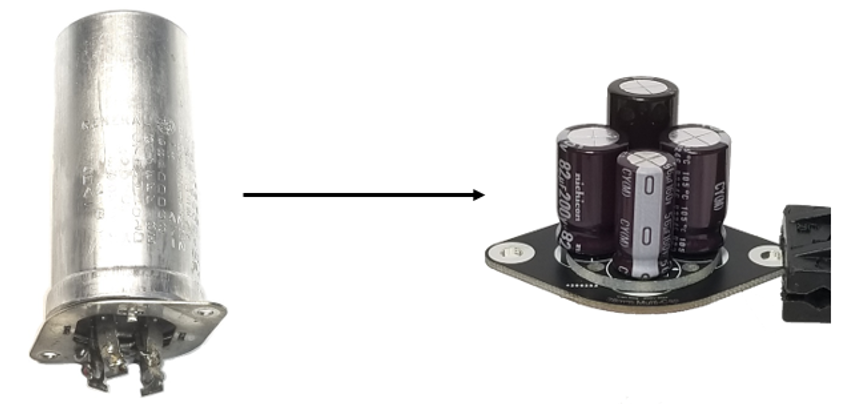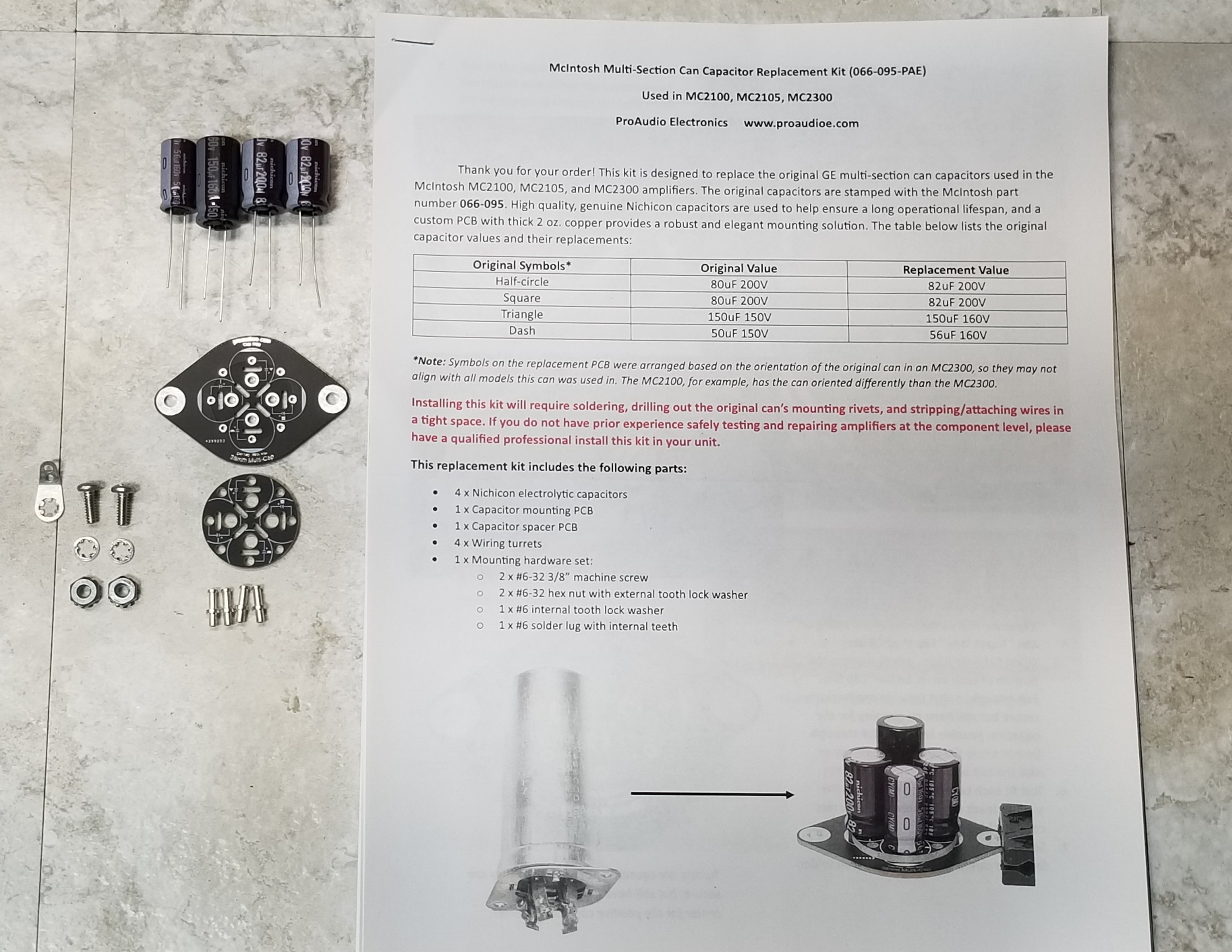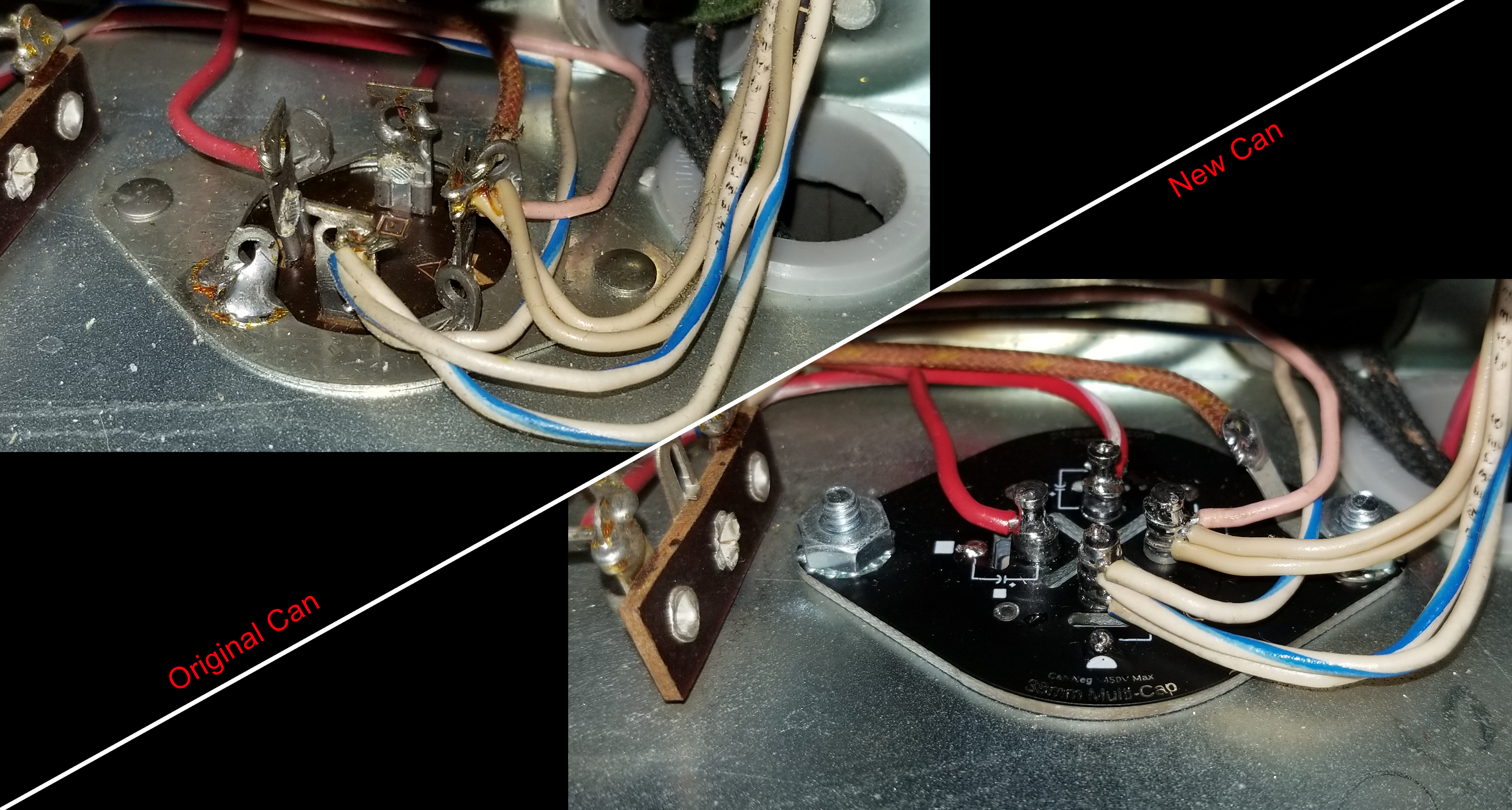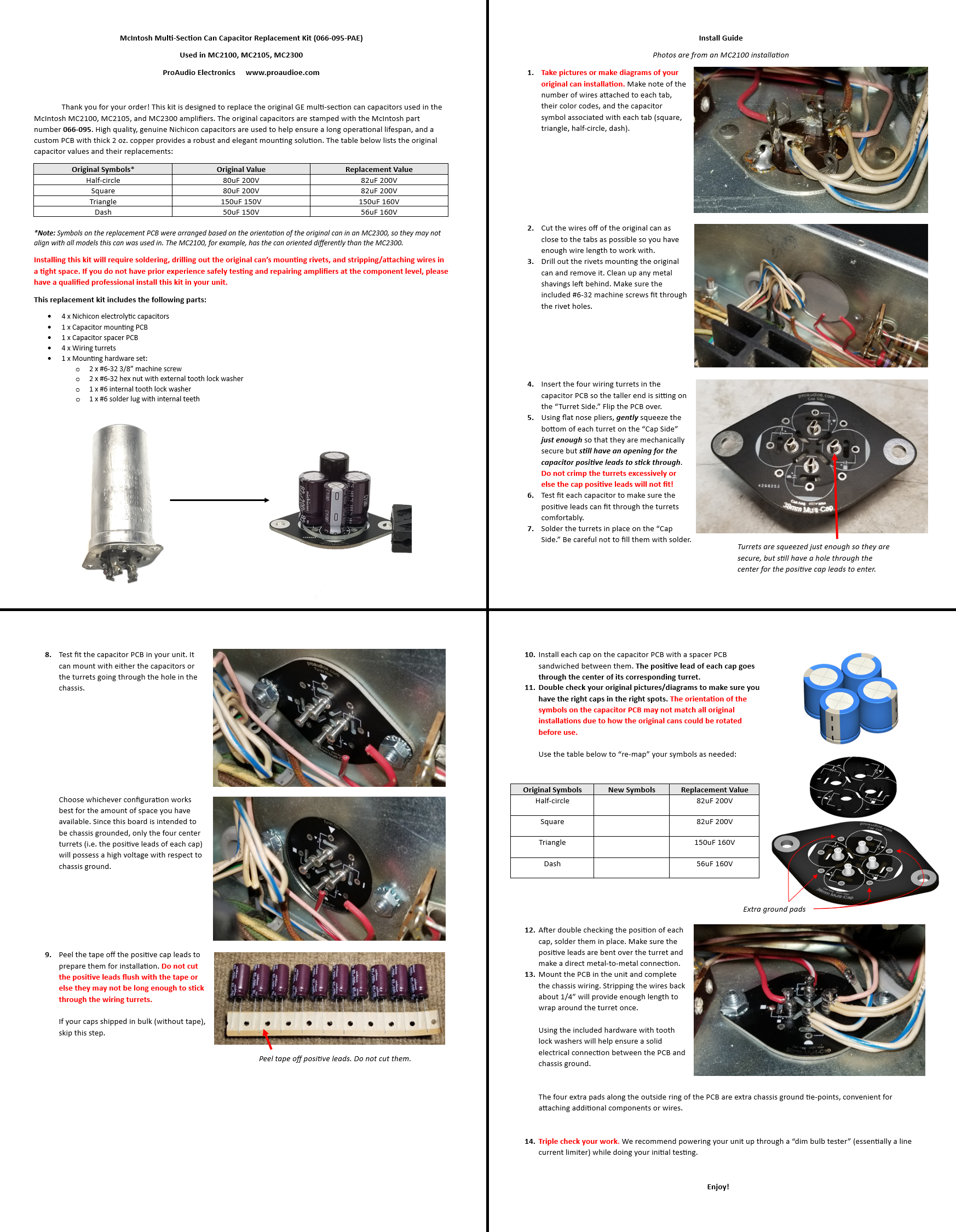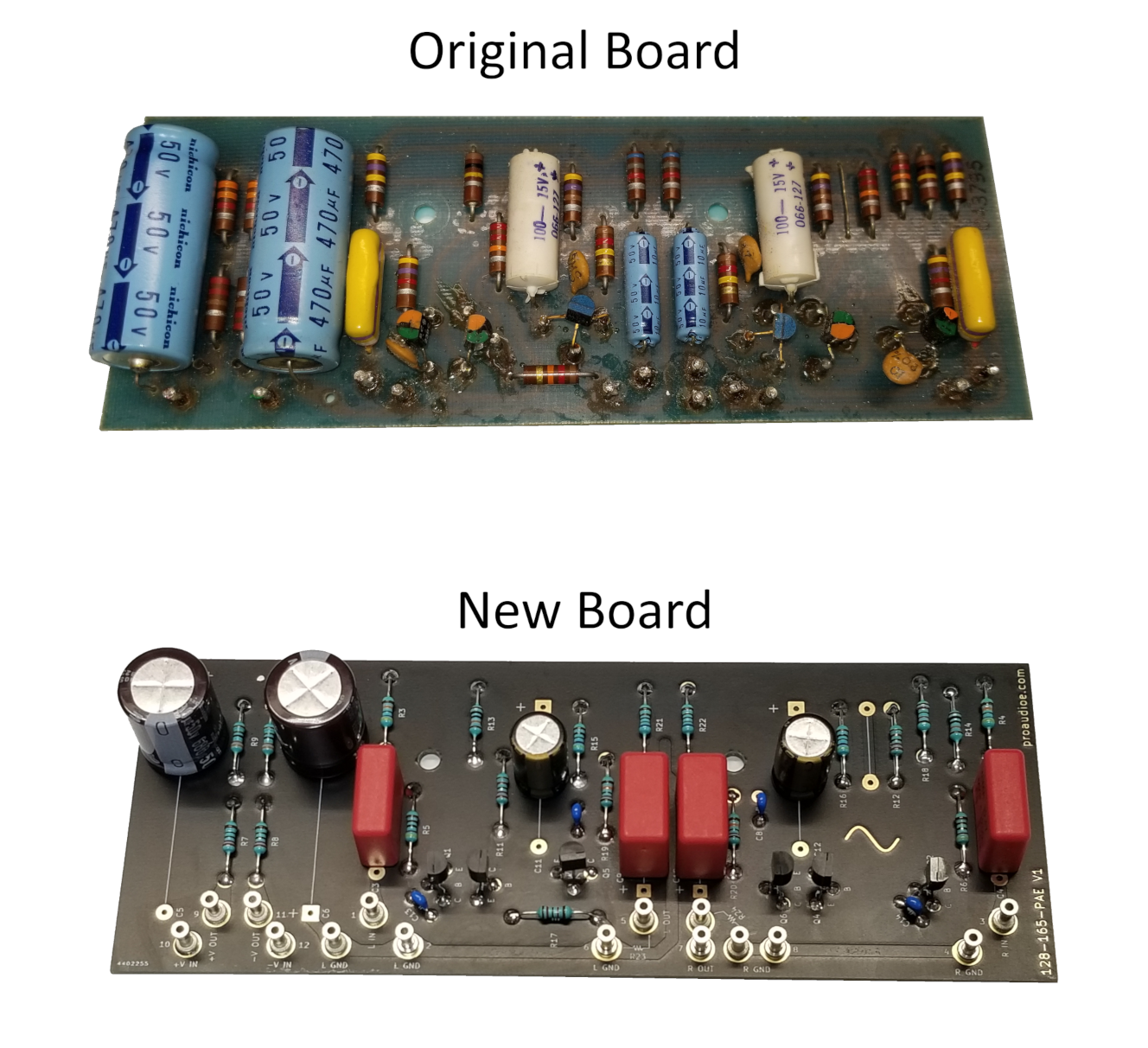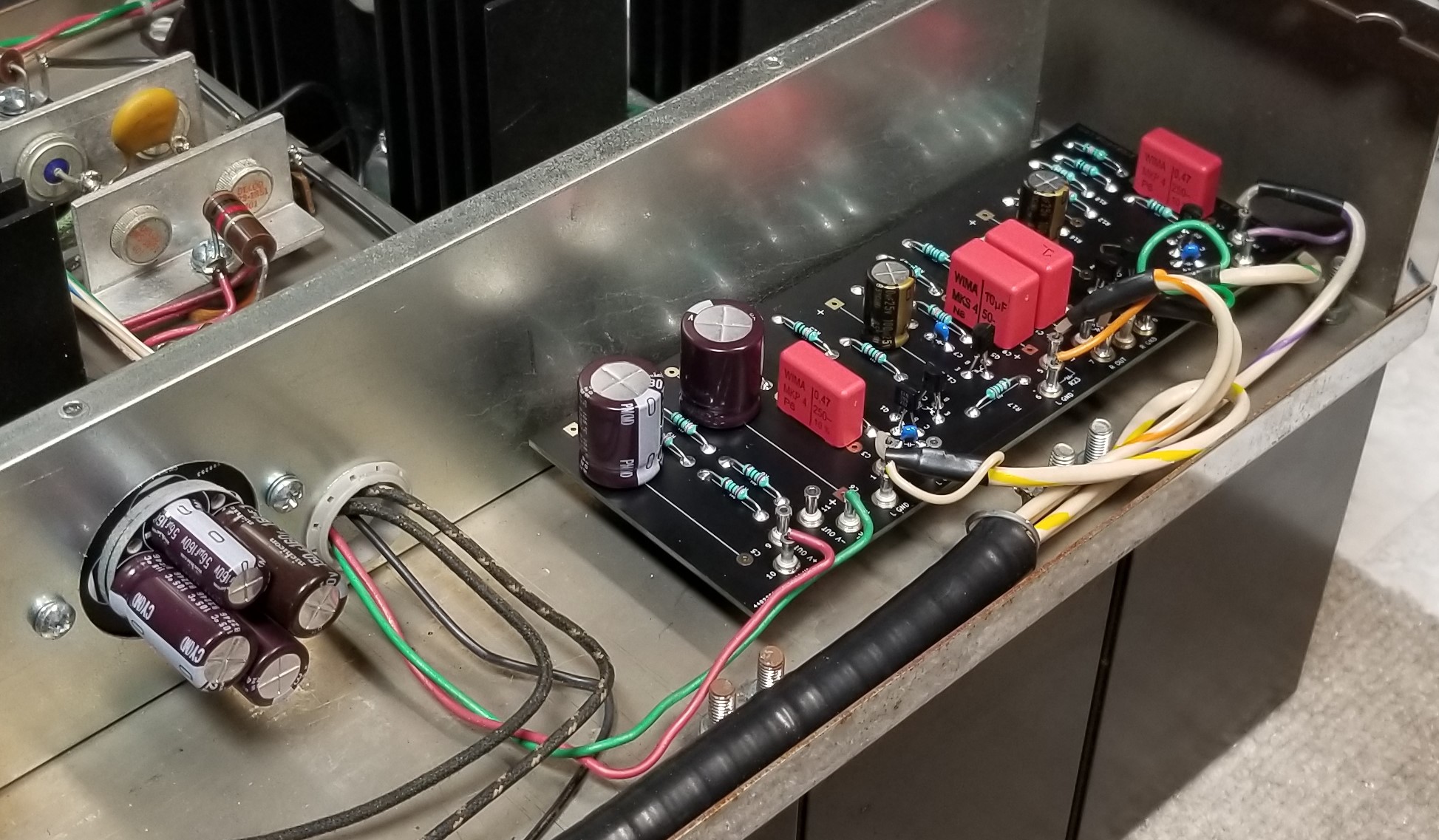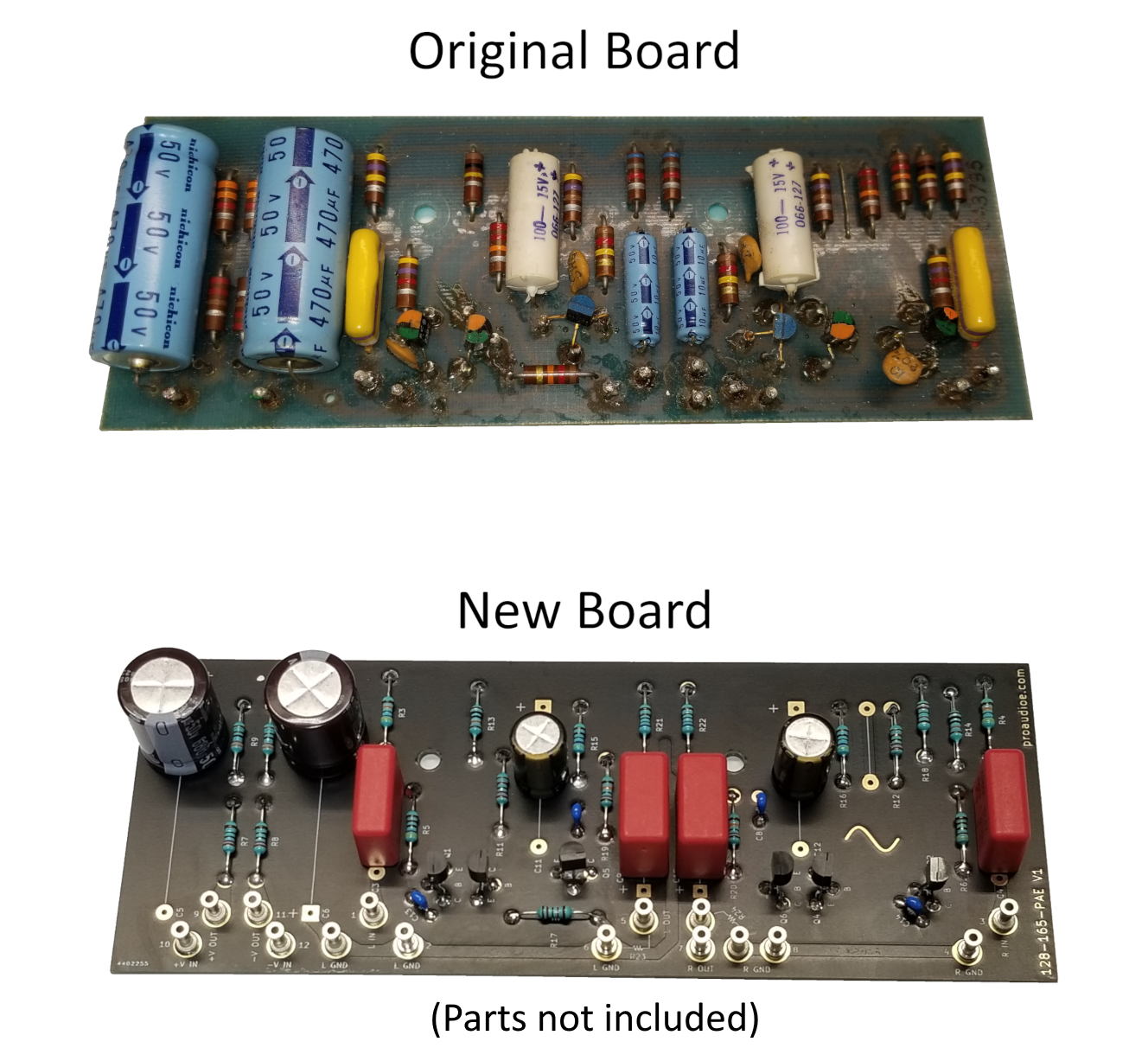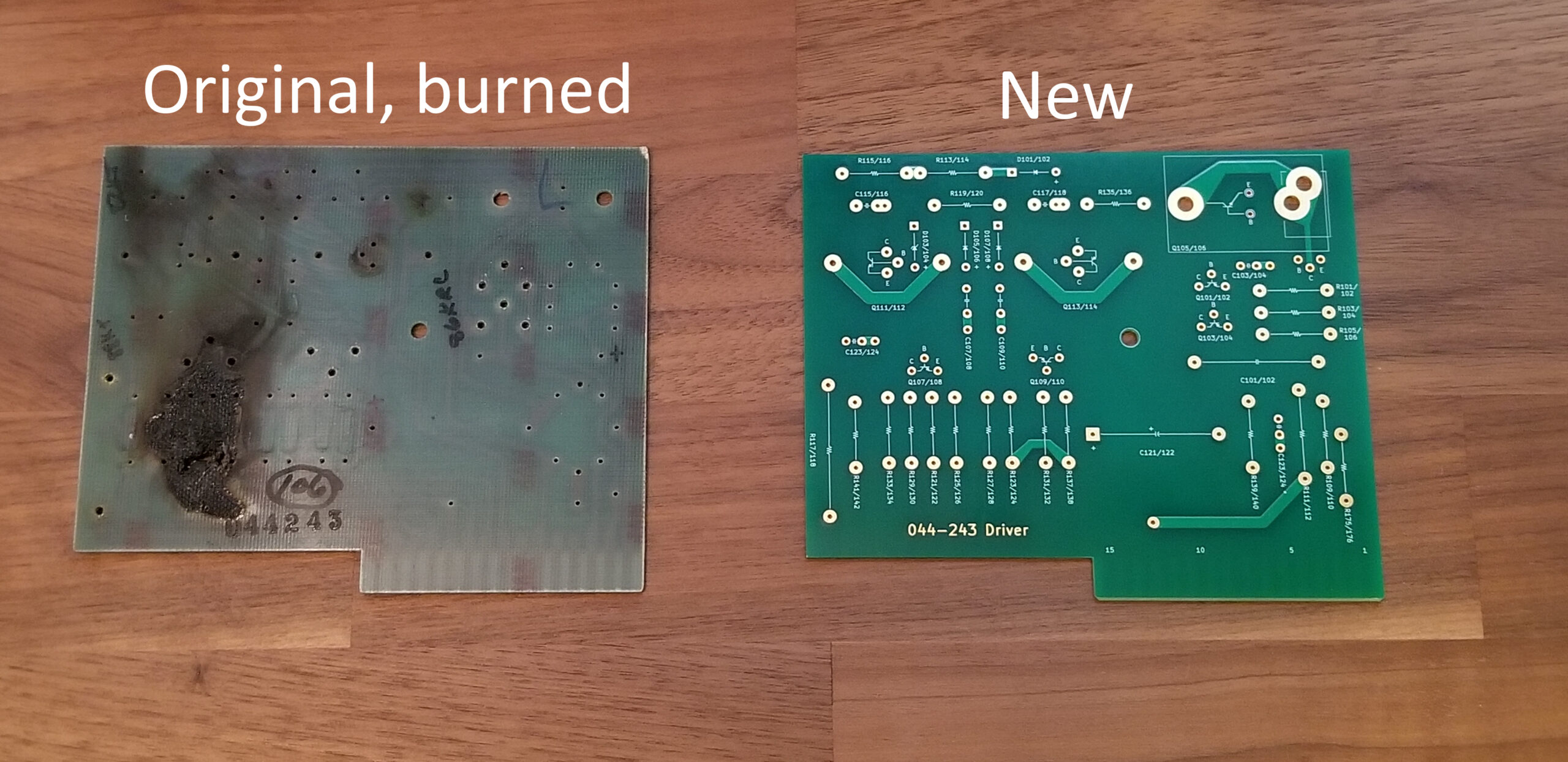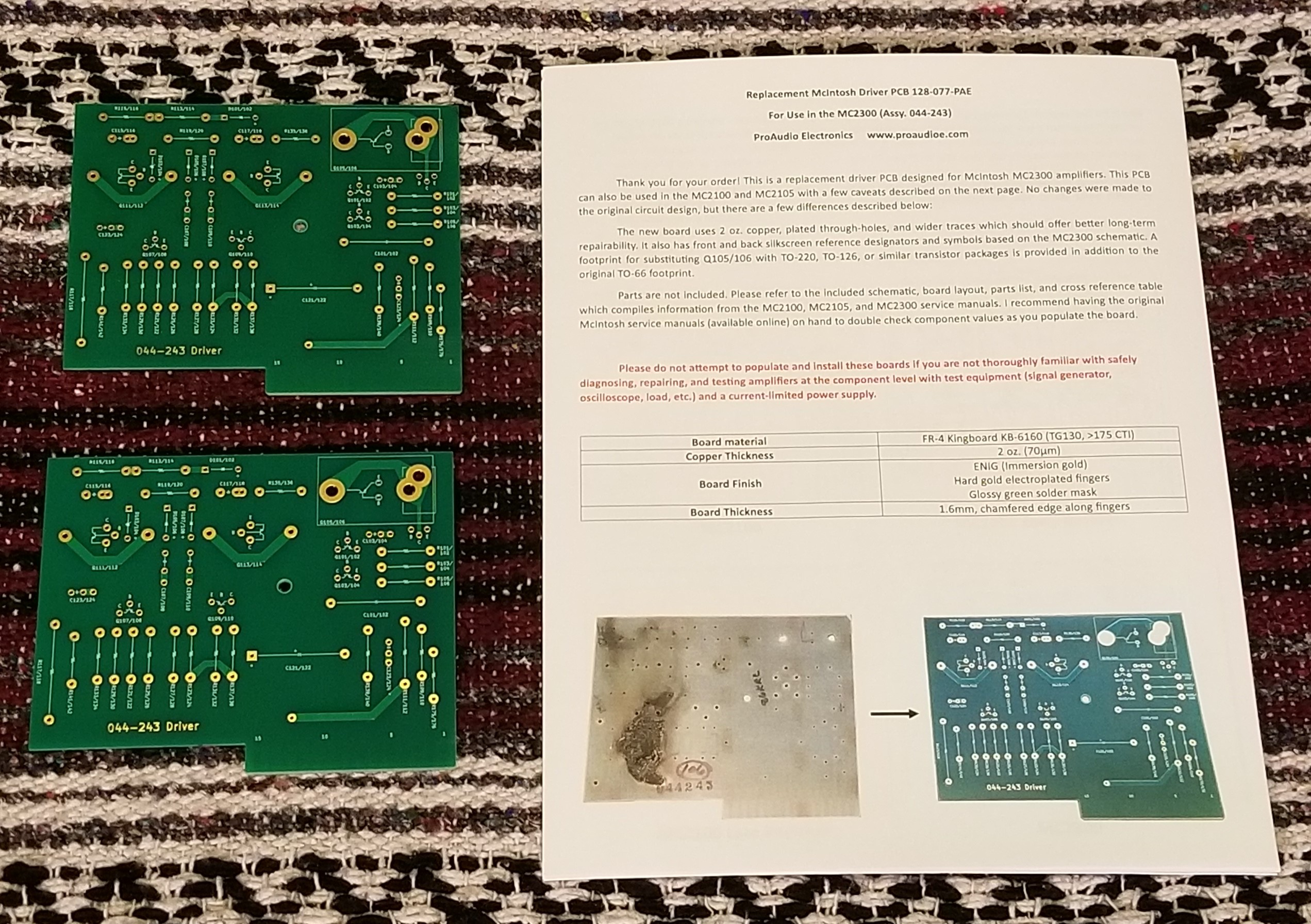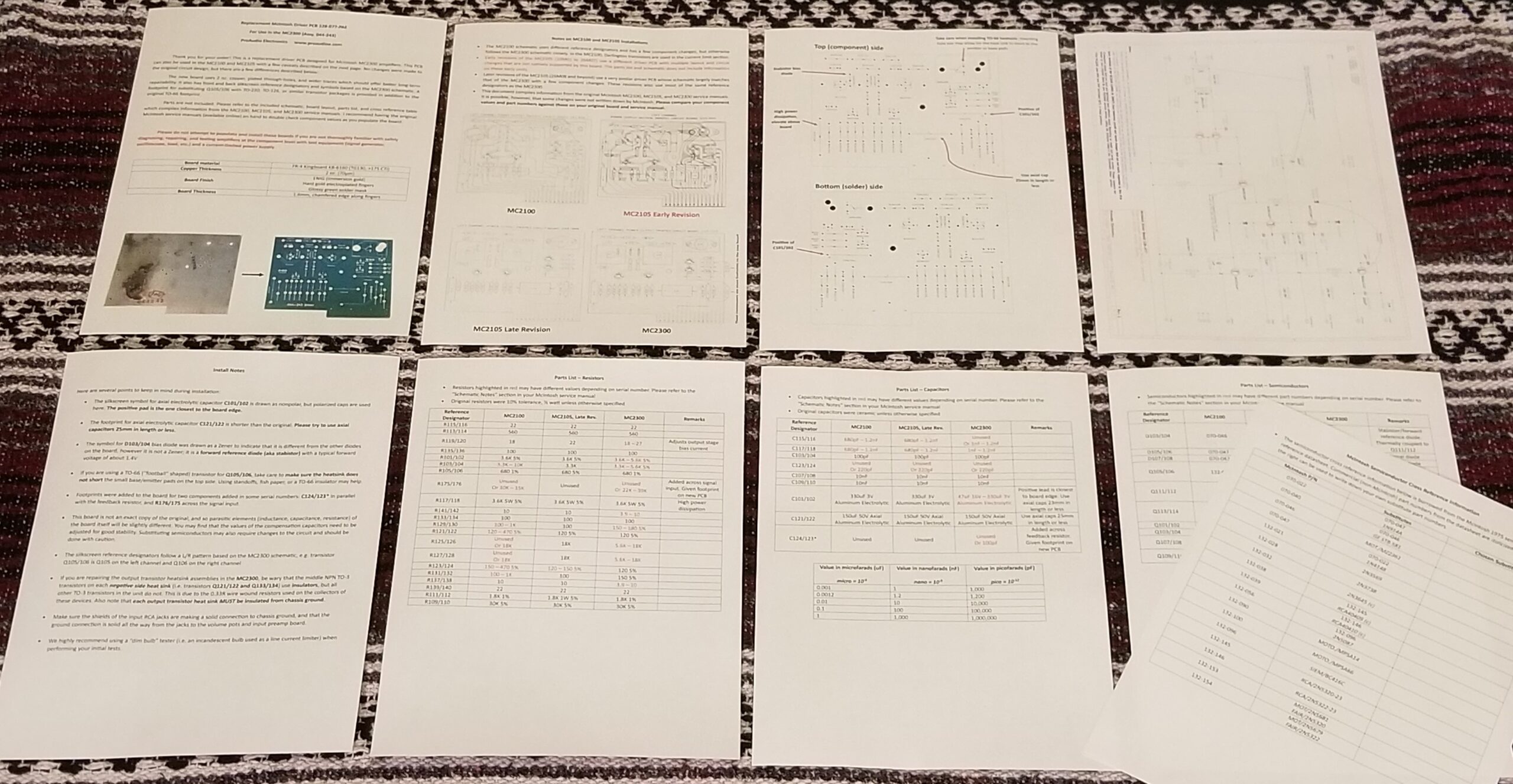066-095-PAE
Click the link below to download the installation guide
This is a replacement kit for the GE multi-section can capacitors used inside the McIntosh MC2100, MC2105, and MC2300 power amplifiers. These cans were stamped with McIntosh part number 066-095. Other models may also use this can. High quality, genuine Nichicon capacitors rated for operation up to 105°C are used to ensure a long operational lifespan, and a custom PCB with thick 2 oz. copper provides a robust and elegant mounting solution. Four wiring turrets facilitate the connections to each of the four caps. No more gutting the old cans and sticking new caps inside!
Includes four Nichicon capacitors, one cap mounting PCB, one spacer PCB, a hardware kit, and a thorough step-by-step installation guide.
Installing this kit will require soldering, drilling out the original can’s mounting rivets, and stripping/attaching wires in a tight space. If you do not have prior experience safely testing and repairing amplifiers at the component level, please have a qualified professional install this kit in your unit.
The following capacitor values are included:
- 82uF 200V (Replaces 80uF 200V)
- 82uF 200V (Replaces 80uF 200V)
- 150uF 160V (Replaces 150uF 150V)
- 56uF 160V (Replaces 50uF 150V)
Note: The capacitor symbols (square, triangle, half-circle, dash) on the cap PCB were arranged based on the orientation of the original can in the MC2300. Other models, such as the MC2100, typically had the cans oriented differently, meaning the position of the symbols on this board may not align with your original installation.

